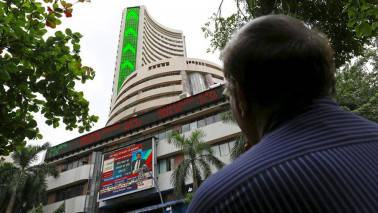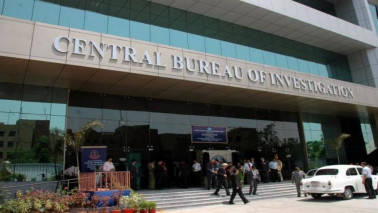For the insurance industry, technological developments such as blockchain, artificial intelligence, telematics, cloud computing, the Internet of Things (IoT) and advanced analytics are providing new ways to improve efficiency. It has to some extent cut down the need for physical documentation and enabling real time settlement of claims by providing new avenues to measure, control and price risks.
Tapan Singhel
The last year has seen the Indian general insurance industry embark on an exciting path of continuous transformation and reinvention to be relevant to the way customers seek services. It has been trying to radically shift the archaic customer perception that making a claim is an arduous experience, by bringing convenience to a level where there are no hassles. Whilst a few new players were added to the industry, the existing incumbents consolidated their business models.
For the insurance industry, technological developments such as blockchain, artificial intelligence, telematics, cloud computing, the Internet of Things (IoT) and advanced analytics are providing new ways to improve efficiency. It has to some extent cut down the need for physical documentation and enabling real time settlement of claims by providing new avenues to measure, control and price risks.
During the last year, general insurance and more specifically health insurance has been one of the major talk points in the country with the roll out of the largest mass health insurance scheme in the world- Ayushman Bharat – PMJAY. Significantly, with this scheme, insurance is now being recognised as an important tool to meet the increasing healthcare expenditure of a large proportion of the country’s population. The scale of implementation of the scheme will in the long run ensure standardization in treatment protocols and pricing of treatments, which will completely transform healthcare in India & contribute towards a healthier India.
We also saw some changes in the Pradhan Mantri Fasal Bima Yojana with the government and the industry working towards increasing the penetration of crop insurance and make even the smallest farmer beneficiary of insurance. The revised Operational Guidelines during the last year has introduced penalties and rewards for insurance companies and states thus, increasing their accountability and bringing in increased transparency. Time limits are set for states to share yield data and release their share of subsidy. A grievance redressal mechanism has been defined which allows District & State level committees to be formed with all stakeholders for dispute resolution. Technology can be the major game-changer in crop Insurance during the next year and with increased integration, the faster information disseminates, quicker would be resolution of farmers’ worries
The popularity of these mega schemes are extremely important for the general insurance industry with penetration standing at barely 0.9% in India particularly as underinsurance is a faceless behemoth in India. This not only affects the economy at a macroscopic level, but even individuals lose out on their lifetime’s savings owing to sudden and unpredictable losses. A case in point was the Kerala floods where heavy rains and the subsequent floods caused massive devastation and is estimated to have caused an economic loss of close to Rs 20,000 crore, with insured losses being miniscule in comparison to the overall economic damages.
Motor insurance too has undergone significant changes during the year with policymakers emphasising its importance. Despite third- party insurance being compulsory by law in India, a large number of vehicles on the road remain uninsured. Therefore, to plug the problem of uninsured vehicles, during the year, insurers have started offering long-term motor insurance policies specifically three-year policy for newly bought private four-wheelers and a five-year policy for private two-wheelers. Additionally, to simplify things further for the customers and insisting on the need to have a Personal Accident cover of at least Rs. 15 lakh, IRDAI clarified that owner-driver need not take multiple Compulsory Personal Accident (CPA) covers for more than one vehicle. Also, if a person has general personal accident policy that covers death and permanent disability for sum insured of at least Rs. 15 Lakh, they don’t need to buy CPA as part of package/liability only or standalone. This I believe will help create awareness about the importance of having a Personal Accident cover and provide much-needed relief and financial support to the policyholder and their family members if she/he is disabled or succumbs to injury due to an accident as an owner or driver of the vehicle.
Complimentary industry regulations have also led to new product development. With Real Estate Regulatory Authority (RERA) making Title Insurance mandatory for developers, insurers today are addressing this need by introducing title insurance which is set to evolve and grow in the Indian market. Insurers have also started offering products which meet evolving needs and growing niches of customers. India reportedly sees a cybercrime reported every ten minutes, which makes it extremely important for individuals to protect themselves from this new age risk. Therefore, to stay ahead of the curve, new age covers like cyber insurance have been introduced to protect individuals and corporations from cybercrimes, such as online fraud leading to loss of funds, phishing, identity theft and malware attack which is currently the need of the hour. Insurers have also forged partnerships with major ecommerce platforms for products such as mobile phones for screen damage/accidental damage/liquid damage, and theft which have been introduced by the industry to remain relevant and provide offerings in a way that asserts its benefits to end customers.
Hence, I anticipate that the year 2019 will see insurers becoming increasingly customer obsessed and being present wherever customers are and offering products, which are uniquely suited and customised to their exact needs. Instantaneous lodging and settling of claims and integration with various technologies will see insurance get smarter, faster and predicting and providing security to customer needs even before they anticipate them. I see insurance evolving beyond claims to the everyday sphere of the customers lives and going beyond. The industry has evolved and done a lot more, but this is just the tip of the proverbial ice berg, the new year promises to take insurance to the next level.
Tapan Singhel, MD & CEO, Bajaj Allianz General Insurance














